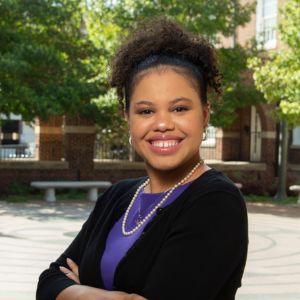Will Splitting a School District Segregate Black Families – Or Empower Them?
Schlitz: With a North Texas district considering breaking in two, should Black residents fight to stay there with little representation?

Get stories like this delivered straight to your inbox. Sign up for The 74 Newsletter
In communities across America, school boards have become the battleground for our nation’s future. What’s happening in North Texas, where the proposed breakup of a school district threatens to fracture a diverse community, isn’t just a local dispute; it’s a warning for the entire country.
Black Americans face a pivotal decision: continue fighting to reform systems that were never designed for us, or strategically build power within new frameworks to ensure equitable representation. The eyes of Texas, and the nation, are watching closely, because the forces at work here could soon be in everyone’s backyard.
When I ran for a seat on the Keller Independent School District Board of Education in 2023, I did so with a sense of urgency. The current board – which is all white in a district where half the students come from communities of color – had made it clear they were intent on pushing a far-right agenda, banning books, targeting LGBTQ students, and undermining diversity initiatives.
Now the board is leading the charge to split the district in two, putting the fight for representation at the heart of these issues.
The push to break up Keller ISD, a 34,000-student district north of Fort Worth, is not about improving educational outcomes or addressing financial concerns. It is a modern evolution of white flight into white power preservation. In past decades, our nation saw white families leave diverse areas for more homogenous suburban communities. Today, as America becomes a majority-minority nation, this strategy has evolved. It is no longer just about physically leaving diverse spaces but about creating new structures that consolidate power.
The proposed breakup of Keller ISD seeks to concentrate the power of white families within a smaller, predominantly white district while leaving behind a more diverse and potentially under-resourced counterpart.
If the split happens, the new Keller ISD would be 68.4% white – compared to 48.9% now – while the newly formed Alliance ISD would be 43.8% white, with significantly higher Black and Latino populations. This restructuring is not just about demographics, it ties directly into the financial viability of both districts.
Proponents of the split claim it would improve financial management, but these claims are suspect. Texas public schools are already underfunded due to the state’s education formula, and school vouchers would divert even more resources. A financial analysis by the Moak Casey consulting firm indicates revenue distribution would largely remain the same, meaning the financial justification for the split is questionable.
The creation of two separate administrations – each requiring its own superintendent, financial officers, and support staff – would likely increase overall costs rather than reduce them. This raises concerns about whether the split is truly about financial sustainability or about consolidating power in Keller ISD while leaving Alliance ISD to struggle with fewer resources, given lower property values and limited possibilities for commercial development within its proposed boundaries.
At the same time, splitting Keller ISD in half would offer opportunities for Black and Latino communities to have a voice in the new district’s governance.
As a Black attorney who ran for the school board, I view this moment through both a personal and legal lens. Despite earning 41.8% of the vote in my 2023 campaign, I failed to win a seat in a district that allows all voters to vote for all board positions. At-large voting has long diluted the political power of communities of color. Legal challenges, such as Texas’ Lewisville ISD’s Voting Rights Act settlement, and landmark cases like Dillard v. Crenshaw County have exposed the discriminatory impact and led to reforms.
This is why the fight for fair representation in Keller ISD is part of a national struggle. As Gen Z prepares to make up the majority of voters in the 2028 presidential election, we are witnessing backlash from those who fear losing control. The proposed breakup of Keller ISD is a reaction to this inevitable change, a last-ditch effort to hold onto power in an evolving country.
Viewed through that lens, my community should fight the district split. If these tactics of white power preservation go unchecked, they will be replicated elsewhere, further entrenching inequality in our education system and beyond. This is why the Voting Rights Act remains as crucial today as it was in 1965.
At the same time, Black Americans have long fought for inclusion within systems designed to exclude us. Today’s fight goes beyond inclusion, it is about empowerment and reform. Why should we fight to stay in districts deliberately designed to deny us fair representation, especially when it comes to our children’s education? Shouldn’t we recognize that our survival and advancement depend on securing power for ourselves? This is about ensuring that Black communities have access to meaningful representation and decision-making.
Achieving fair representation requires a two-pronged approach. First, we must push districts like Keller ISD to replace discriminatory at-large elections with member-specific districts that ensure diverse communities have a direct voice in governance. This is true regardless of whether the district splits.
Second, we must recognize opportunities to reshape power dynamics – leveraging policies that attempt to isolate communities of color to instead create new districts where Black and progressive leaders can thrive.
This approach is even more critical given the current state of our judiciary. We are no longer dealing with the same Supreme Court that delivered Brown v. Board of Education. Instead, we face a judiciary that is disregarding precedent and seemingly moving toward a framework more aligned with the segregation allowed in Plessy v. Ferguson.
In this legal climate, Black Americans cannot afford to rely solely on the courts to protect voting rights and representation. We must proactively fight for structural reforms that ensure equitable political power and inclusive governance – and champion policies that dismantle exclusionary voting structures and build systems that reflect the full diversity of our communities.
Get stories like these delivered straight to your inbox. Sign up for The 74 Newsletter

;)
